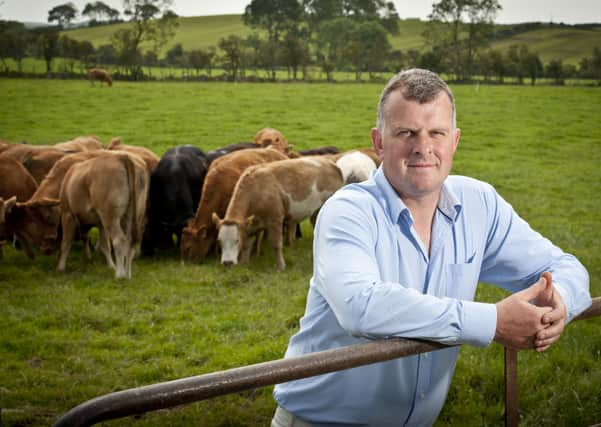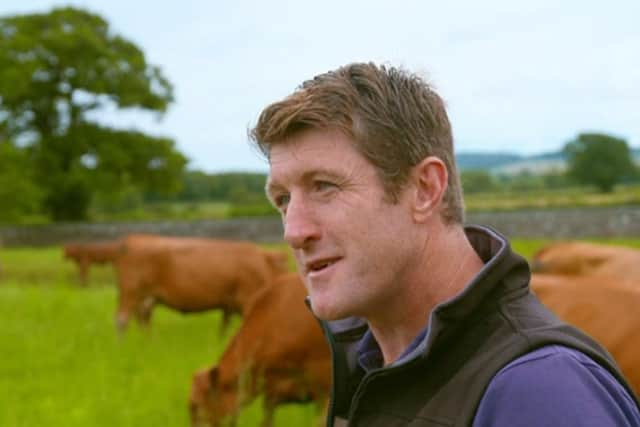Potential to better utilise grass within beef production systems


‘Focus on Farmers’ is a collaborative initiative by ABP, Queen’s University, the University of Reading and John Deere as part of their membership of the food innovation consortium, EIT Food.
The event was chaired by ABP’s UK’s Senior Agricultural Manager, James Draper using AgriSearch’s knowledge exchange webinar platform.
Advertisement
Advertisement
Guest speaker, AFBI’s Dr Francis Lively, kicked-off with an overview of how grass utilisation levels within Northern Ireland’s beef sector compare with the dairy industry and how both industries fare when compared with the maximum grass output levels that have been measured, courtesy of grass plots.


He said: “Grass utilisation on beef farms is currently averaging 4.1t of dry matter per hectare. The equivalent figure for the dairy sector is 7.1t.”
He added: “Recent AFBI research has confirmed that securing an extra one tonne of grass dry matter can improve returns by £160. This figure is probably higher now, given the recent uplift in beef prices.
“However, if the increase in output is accompanies by a 5% increase in grass quality, the improvement in returns can be further increased to £218 per hectare.
Advertisement
Advertisement
“Producing more grass will allow beef farmers to improve their stocking rates. Improving the quality of the grass available to stock will help reduce the requirement to feed concentrates.”
Francis went on to point out that lower nitrogen usage on beef arms accounts for a significant proportion of the difference in the grass output levels they achieve, relative to dairy businesses.
He further explained: “Every additional £1 spent on nitrogen will deliver an extra £4.50 worth of grass dry matter. And of course, nitrogen does not have to be applied in the form of chemical fertiliser. The greater inclusion of clover in swards can deliver the same end-result.”
The AFBI scientist went on to point out that rotational grazing systems will deliver the optimal level of grass utilisation within all beef production systems. Recent AFBI trials have confirmed the benefits of changing paddocks daily.
Advertisement
Advertisement
“This result was achieved when compared to a three-day paddock system,” Francis commented.
“Regular movement of stock will help reduce the level of poaching incurred during wet spells. Early spring grass is highly nutritious. It is crucially important for young stock to make best use of this quality forage.
“Enhanced liveweight gains that are accrued in the spring of the year will be carried through the remainder of the grazing season.”
‘Focus on Farmers’ Ambassador farmer, Sam Chesney, who supplies ABP, explained that continuous grass measuring and grass budgeting are core drivers for his suckler beef and sheep enterprise. He farms near Kircubbin on the Ards Peninsula. He added: “We can grow 14.3t of grass dry matter per hectare of the farm. The current utilisation rate is 93%. Within the business model I follow, grass is valued at £100 per tonne of dry matter. Net profit is targeted to account for 20% of business turnover.”
Advertisement
Advertisement
Sam’s grassland utilisation policy is centred on regular grass monitoring, the development of a grassland wedge across the farm and knowing the exact grass requirements of his stock at all times. He monitors grass covers with a plate meter on a weekly basis. He explained: “Being able to predict when grass surpluses or deficits will arise before they happen is crucially important.
“A case in point was the impact of the drought that impacted on the UK as a whole in the spring of this year. Grass measuring and budgeting had allowed me to foresee this coming. In response I allowed grass to grow out in several paddocks, which were subsequently grazed down slowly as standing hay.”
James Evans is an organic beef producer. He farms at Bishop’s Castle in Shropshire and was invited by ABP to take part in Focus on Farmers. By his own admission he was a ‘late convert’ to the culture of putting grassland management at the core of his farm business model. He explained: “My hand was forced, given that the owners of the farm I lease wanted to go organic. Obviously, I wanted to keep the farm.
“First off, I decided to seek out a grazing consultant. And it was the best decision I ever made. It provided with the opportunity to get a fresh pair of eyes on how grass can be put to best use within a beef production enterprise. Getting expert advice also gave me the assurance that I was making the right investment decisions.”
Advertisement
Advertisement
To kick start the organic conversion process, James re-seeded his entire grazing block with herbal leys while also putting in place a full rotational grazing platform: paddocks, drinking troughs and road net work. He said:
“This amounted to an investment of £15,000. But it was one worth making.”
James endorsed all the points made by Francis Lively and Sam Chesney about grass measuring and utilisation. He concluded: “I monitor grass availability using a satellite: it saves me the hassle of walking the paddocks. Where grazing management is concerned, I operate daily paddocks with the finishing cattle. The cows and calves are in three-day paddocks.”
The consortium partners behind ‘Focus on Farmers’ are the meat processor ABP, Queen’s University Belfast, University of Reading, and John Deere.
All six ‘Focus on Farmers’ webinars can be viewed on the Agrisearch website.